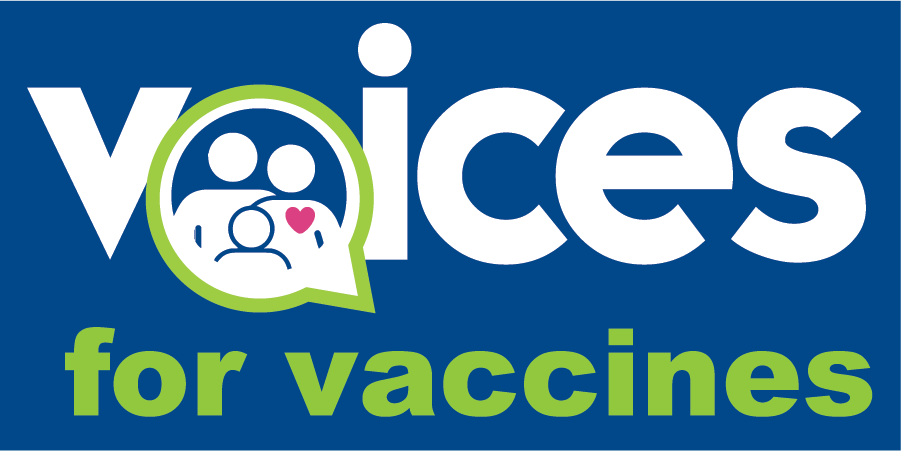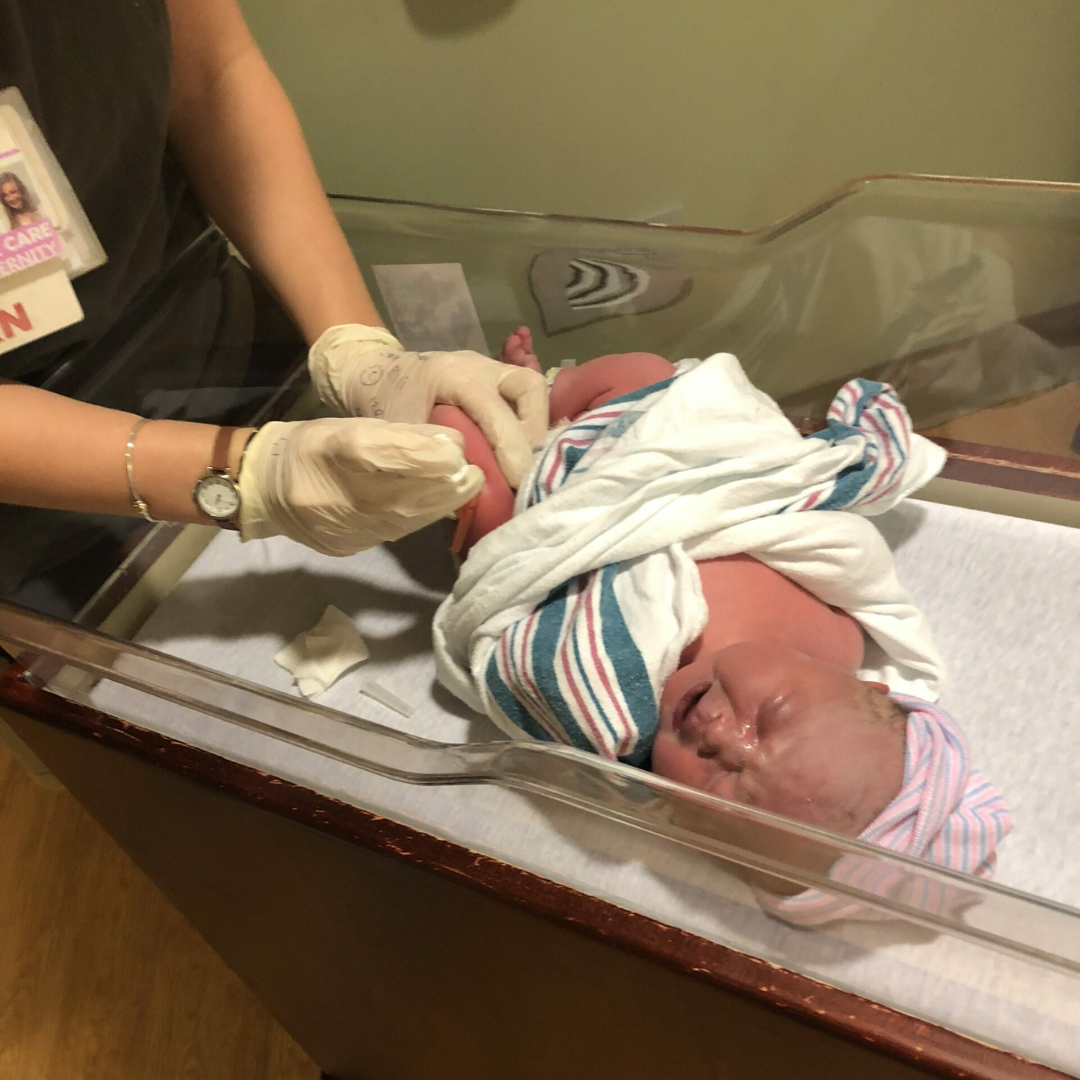by Kathy McGrath
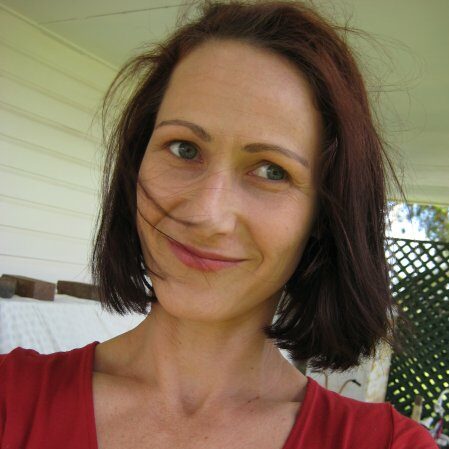
When I first started looking into vaccines, I had no idea that an anti-vaccine movement even existed. I came across claims that the vaccines were toxic and dangerous; the diseases, it was claimed, were not. I have some background in science, so I was able to dismiss those claims as inaccurate, but I couldn’t help but be drawn in by tragic, angry and deeply personal stories from parents who claimed their children were harmed by vaccines.
I dared not question them, but I still couldn’t understand…
If vaccine injuries were occurring on a scale like this, why wasn’t anybody doing anything about it? And why wasn’t the media reporting on them?
I wanted to know more
I wanted to know more about these vaccine injury stories but worried it would be insensitive to probe or question their accuracy. I could hurt their feelings or worse, insult their child’s memory. After all, while I know what it feels like when my child is very sick, I can only imagine what it might feel like to lose a child.
But something wasn’t right about these stories, and I started to squirm with the conflicting information and the inaccuracies.
Let me be clear – I never want to tell a grieving parent how they should think, feel or behave, and I never want to diminish their feelings or experiences. Many of these parents were absolutely convinced that their child was injured by vaccines. But a lot of the information simply didn’t stack up. In these accounts, there were misunderstandings about dosage and toxicity, medical misconceptions, huge leaps or gaps in logic, and attempts to explain what happened in terms they didn’t seem to comprehend were simply implausible or impossible.
I started to get curious
Without any of the verifiable medical information that might be found, for example, on a medical record, it would be foolish of me to presume anything. But I began to gently ask questions about these accounts, and with the information given, I set about trying to find real answers from doctors and scientists that I knew. In my personal quest for the ‘truth” only a handful of stories were very highly likely to be real vaccine injuries of a serious nature. The rest were utterly impossible or could be explained by something else, something far more likely. Some were indeterminable.
Understanding VAERS
I have never personally known anyone who was injured by vaccines. So I got to thinking: how often do vaccine injuries actually occur, in real life? There must be an official database of them somewhere, right?
If you ask the parents of alleged vaccine-injured children, they will tell you these events are recorded in VAERS – the Vaccine Adverse Event Reporting System. Other countries have their own reporting system – in Australia we have the TGA Database of Adverse Event Notifications.
But these databases are essentially a collection of unverified reports. That means these reports have not yet been medically assessed. They are not determined as causal and are not proof of real injury numbers. In fact, both VAERS and The TGA Database carry warnings to this effect:
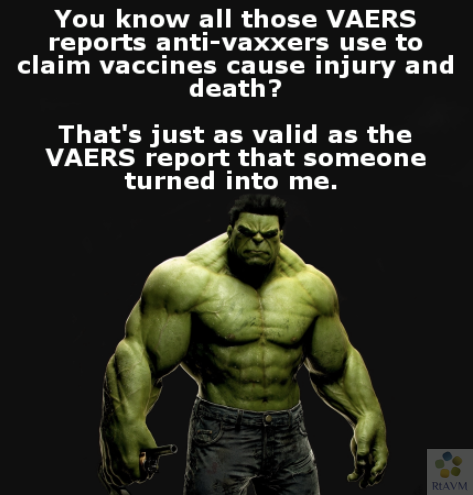
“In accessing the database we encourage consumers to understand that a report of an adverse event does not necessarily indicate there is a causal link between a medicine and an adverse outcome.”
That’s right. They may not even be connected. One of the more well-known examples of how any unrelated event can make it into VAERS was Dr. James Laidler’s report that the influenza vaccine turned him into the Incredible Hulk
YouTube videos aren't evidence
YouTube videos were also presented to me as “evidence” of vaccine injury, but they are not proof of anything either. Anecdotal reports – VAERS, YouTube, rumors, a friend’s cousin’s hairdresser’s aunt’s version of events – they’re all unreliable. And so is an unqualified and inexperienced parent trying to make medical diagnosis without really understanding the process – no matter how earnest and well-meaning they are.
Real vaccine injuries are recorded
Real vaccine injuries are recorded. You or your doctor can report the injury and if it’s serious, so begins a public health investigation. They are not overlooked. They are not covered up. If anything, they are sought after. Vaccine safety is taken extremely seriously by vaccine manufacturers and the medical establishment which includes doctors, nurses, the government, and public health professionals. Even researchers look for vaccine injury reports: sometimes they are written up in the medical literature as a case study.
Only after reports have been medically analyzed can they be confirmed as real vaccine injuries, and these cases contribute to official vaccine statistics as legitimate risk of reactions.
A recent study of VAERS data shows that less than 3% of adverse reaction reports from vaccines are actually found to be related to the vaccine. Further, when the data of these verified vaccine reactions were analyzed, the majority of them were of a minor nature such as a low grade fever or soreness at the site of injection. When you do the real numbers, the risk of serious vaccine injury is orders of magnitude less than 1%.
Outrageous stories are meant to create fear
Some of the vaccine injury stories I encountered were downright impossible. For example, SIDS and Shaken Baby Syndrome were being blamed on vaccines, when in fact a meta analysis of the medical literature shows that immunizations are actually associated with halving the risk of SIDS. And Shaken Baby syndrome is an abusive head trauma, not a vaccine injury.
Actually, most of the vaccine injuries commonly discussed by vaccine critics had absolutely no connection to immunizations other than coincidental timing with the administration of the vaccine. For example, I read about parents who believed that pneumonia, a middle ear infection, a cough or cold, eczema, asthma, autism, epilepsy, and other unrelated conditions were “vaccine injuries” simply because their child had one of these things happen or diagnosed around the same time as their jabs. One woman was convinced that a flu shot gave her endometriosis. Impossible.
Then there were some genetic conditions, such as epilepsy or autism, which tend to pop up early in a child’s development and may coincide with vaccination. But these things occur in children with or without vaccinations.
Vaccine injuries are rare
True vaccine injuries of a serious nature are exceptionally rare. We know they are real when they’ve been medically confirmed or published in peer-reviewed, credible medical journals. They are so rare we usually hear about them in the media and remember them by name. These kinds of cases should be swiftly and generously compensated.
David Salamone, Jacob McCarthy, and Saba Button
For example, American David Salamone and Jacob McCarthy from Australia both developed paralytic polio from the oral polio vaccine, which is no longer administered in the United States or Australia. Saba Button from Australia developed brain damage after ongoing febrile seizures from CSL’s FluVax. (This vaccine has now been withheld for use in children younger than 5 and was never in use in the United States.)
Izzy Olesen
Other cases are deemed “causation indeterminable” – but it may be possible the vaccine caused it. For example: Izzy Olesen suffered from Stevens-Johnson syndrome after the DTaP booster. It was reported by medical staff as a possible vaccine reaction, but causation cannot be proved.
Some events are so rare, it is impossible to determine whether the vaccine cause it or not. Other cases are rare, but given other information the possibility of a vaccine injury is not very likely:
For example:
The long-held myth of vaccine encephalopathy was debunked upon the discovery of Dravet’s syndrome. But there was no trumpeting fanfare, no viral internet sharing when this news came out.
Ian Gromowski
There is a very sad case of baby Ian Gromowski who allegedly died because of the Hepatitis B shot. However, Ian’s mother was induced due to toxemia and pre-eclampsia which indicate a high-risk and complicated pregnancy. Moreover, Ian had aspirated meconium prior to birth and was born with a fever indicative of infection. He was also allergic to an antibiotic he was given. All of these complex medical factors surrounding his case demonstrate that he did not die simply because of a reaction to the Hepatitis B vaccine. In reality, it was much more complicated than that and the vaccine most likely in fact has nothing to do with his death whatsoever.
The Gardasil Girls
Then there are a collection of reports known as the “Gardasil Girls.” Their alleged injuries range from ovarian failure, neurological conditions, meningitis, chronic fatigue, pulmonary embolism, influenza, chronic Lyme’s disease morphing into a vaccine injury and death. But there is no medical evidence that these are caused by the vaccine. However, there is a mountain of scientific evidence demonstrating the safety of the HPV vaccine. With more than 50 million doses having been given worldwide with very close safety monitoring, we know that this vaccine is safe.
In fact, when you review the evidence, the rates of major events of concern, namely Guillain-Barre syndrome, autoimmune disorders, transverse myelitis, and death, were all exceedingly rare, and not above what one would expect to occur in the normal unvaccinated population. Gardasil does not cause premature ovarian failure.
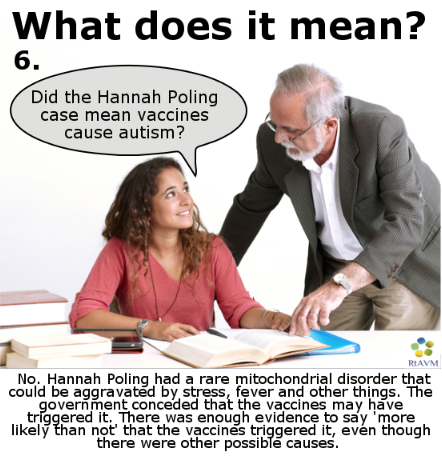
Vaccine Court Injuries – are they evidence?
Sometimes vaccine critics will use Vaccine Court injuries as evidence of harm. But law courts do not determine causation – medical science does. In Australia, all claims would need to go through a lengthy civil process. I think that the Vaccine Injury Compensation Program (VICP) in the US appeals to people who misunderstand the process and may think they can take advantage of the system.
If you take a look at the numbers of vaccine reactions , the rate of compensation of vaccine injuries in the American vaccine court means that 99.99999999% of Americans are vaccinated without issue.
And there are many instances where an awarded vaccine court injury doesn’t mean what they think it means.
Why do people spread misinformation?
So why would a parent still cling to a belief when the medical science concludes otherwise? Perhaps because the emotion surrounding the event cements the conviction firmly in their mind and it’s hard to undo a thought process where emotion overrules logic.
People who don’t have a real vaccine injury and spread myths about them do a great disservice to real vaccine safety advocates; the people who’ve had real vaccine reactions. They undo the good work that people like David Salamone’s father, John, have done. John was instrumental in lobbying the US government to switch from oral to injectable polio vaccine. He still recommends vaccines and recognizes his son’s reaction is a very rare event.
We cannot be expected to accept vaccine injury stories without a reasonable explanation of the mechanism of harm. If you think we should accept all stories at face value, I’m afraid you’re missing the mark as vaccine safety advocates.
The downright ridiculous
So that leaves us with the downright ridiculous. There are YouTube videos so fanciful I don’t know whether to cry until I laugh or laugh until I cry.
For example, Desiree Jennings began to speak in an Australian accent and developed a very bizarre form of dystonia after the H1N1 flu jab. As if by magic, her dystonia symptoms would disappear when she walked backwards or ran (or didn’t have a camera around).
A medical analysis by the admitting neurologist concluded “a strong psychogenic component to her symptoms” and “not a reaction to the vaccine.” Other experts described it as “an elaborate hoax,” “this is not dystonia,” and “there is no way a vaccine can cause someone’s accent to change.”
Other claims might fool you because upon first reading them you might believe them to be true. An example of this was a spate of paralysis in Chad which was not caused by the meningitis vaccine. Alarming at first, not so much when you examine the details and realize the deaths were not caused by the vaccine.
Questions to ask
So this is what I think now: We should politely ask questions whenever we hear or read about a vaccine injury story. We need evidence that the harm truly came from the vaccine, especially if the story comes with a warning that you should not vaccinate your own child.
These are the questions I like to ask when presented with a vaccine injury story.
-
May I ask why you are so sure it was the vaccine?
-
Has it been medically confirmed?
-
Was anything else going on at the time?
-
Before the vaccine was invented, did this condition exist?
-
What caused these conditions before the vaccine was invented?
-
Could it be possible that these things are causing them now?
-
What is the likelihood that the vaccine caused it versus something else?
In many cases it becomes immediately clear that something else could explain it. When it comes to a complex medical situation, doctors and other experts are the ones to turn to for an explanation. And when I’ve had an expert explain them to me, I can honestly say that I have not encountered more than a handful of stories that could not be explained by a far more likely condition or scenario.
Kathy McGrath: is the mother of three living in the ‘burbs in Australia. Her story, like all others on this blog, was a voluntary submission. If you want to help make a difference, submit your own post by emailing us through our contact form. We depend on real people like you sharing experience to protect others from misinformation.
